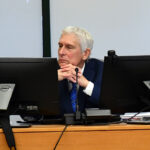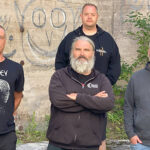Home »

Protecting our children from sexual abuse
By Andrea Spowart
In Canada, one in three girls and one in six boys will be sexually abused by their 18th birthday.
This means that when you look at a school classroom, a hockey team, a ballet class, or the children gathered at your child’s birthday party, you are seeing children who have been – or are being – sexually abused. These numbers are epidemic in their proportion, and yet, studies tell us that these numbers are conservative as 95% of children never disclose.
We like to believe that the people sexually abusing our children are the creepy strangers in the park wearing trench coats. The reality is that 95% of abusers in Canada are people who are emotionally close to our children and are often in a position of trust or authority. Abusers are family members such as grandparents, parents, aunts, uncles, or siblings, or other people the child knows such as a teacher, coach, or friend’s parent. Child sexual abuse is one of the few issues that knows no boundaries. It crosses all cultures, religions, income levels, social status, gender and age.
This raises the question: “how do we protect our children?”
First, we teach children from a young age about their bodies; this includes teaching them the proper names for their body parts. This takes away the stigma of talking about their private parts and sets our children up to have open, honest conversations.
Second, we talk to our children about boundaries. We discuss what is appropriate and inappropriate in various situations with a variety of different people. For example, we explain to our children why it’s not okay for an uncle to look at a seven-year-old’s bum, but it is okay for a doctor to do so with a parent present. We also show children that the boundaries they have set for themselves are respected, such as asking for privacy when changing.
Third, we explain to our children that saying “no” is allowed. This means empowering a child to make the choice as to whom they hug or don’t hug. Allowing a child to say “no” to an unwanted hug or touch teaches them they are in charge of their bodies and what happens to them. This also involves teaching the adults around your child to ask permission before hugging or kissing them, and respecting the child when they say “no.”
Fourth, we help children learn about all of their emotions and how to recognize them in themselves and in others. This means that when a child feels uncomfortable they will be able to recognize it and do something about it.
Fifth, we train our children to distinguish between secrets and surprises. We encourage children to tell a parent any time someone tells them to keep a secret.
Lastly, we minimize one-on-one adult / child interactions. Research tells us that 80% of child sexual abuse happens in one-on-one adult / child situations. As true as this fact is, it is also recognized that a one adult / one child situation can be extremely important and valuable for a child. So when in these situations, there are a number of safeguards that can be implemented to make the time as risk-free as possible: insist that the activity can be observed (in a room with windows, glass in the door, or a public place), inform the adult that someone will be dropping in during the scheduled one-on-one time, drop in unexpectedly if possible, and require that the adult tells you what activities are planned (ask both the adult and child individually afterwards to confirm what took place).
When we put all of these pieces together, we end up with a child who knows what is appropriate and inappropriate, who can recognize when they are feeling uncomfortable, who knows they have the right to say “no” (along with first-hand experience of their “no” being listened to), and who feels completely comfortable talking to adults about their bodies and if their boundaries have been disrespected. What abuser is going to target this child?
Rather, they are going to prey on the child who believes it is “yucky” to talk about their private parts, who isn’t sure what is okay and what is not, who has been told to hug no matter what, and who doesn’t know what they are feeling when their non-existent boundaries are crossed.
Protect your children…talk to them.
– Andrea Spowart, MA, CCC Sexual Abuse Intervention Program Counsellor at Axis Family Resources (250)421-7004 https://www.littlewarriors.ca.
This article submitted by the Cranbrook Early Years Committee. The committee meets the first Tuesday of each month from 1 to 3 p.m. at Cranbrook Family Connections (209A-16th Ave N, beside Memorial Arena). New members are always welcome. For more information about the committee, contact Shannon at [email protected].







